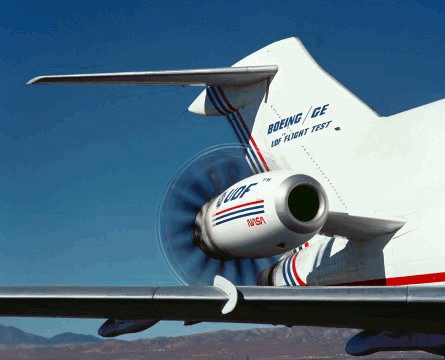GE Aviation announced today a teaming agreement with NASA to investigate the acoustic effects of open rotor engine technology next year at Glenn Research Center's wind tunnel facilities.
Component rig tests on a one-fifth sub-scaled system using two rows of counterrotating fan blades will test a wide range of simulated flight conditions from February through mid-2009.
Open rotor designs are a candidate technology for reducing fuel consumption on the next generation of engines for narrowbodies, such as GE's LEAP-X advanced turbofan. But noise generated by the counterroating, high-speed fan blades must be overcome through new aerodynamic design techniques.
 |
|---|
© GE |
"Engine noise is a prime challenge in operating open-rotor engine systems in a commercial aviation environment," GE's statement acknowledges.
For the wind tunnel tests, NASA is refurbishing testing rig equipment used in the 1980s when the agency and GE jointly tested the GE36 unducted fan, which was later mounted on the aft fuselage and flown on a Boeing 727 and an MD-80.
"GE and NASA will evaluate open-rotor concepts in the wind tunnel with far greater technology capability," said David Joyce, president of GE Aviation.
Open rotor fans should consume less fuel by dramatically increasing engine bypass ratios compared to nacelle-enclosed turbofans.
GE has estimated the technology could be ready to enter operational service after 2017, depending on whether noise, aircraft configuration and regulatory issues can be overcome.
Source: Air Transport Intelligence news
















